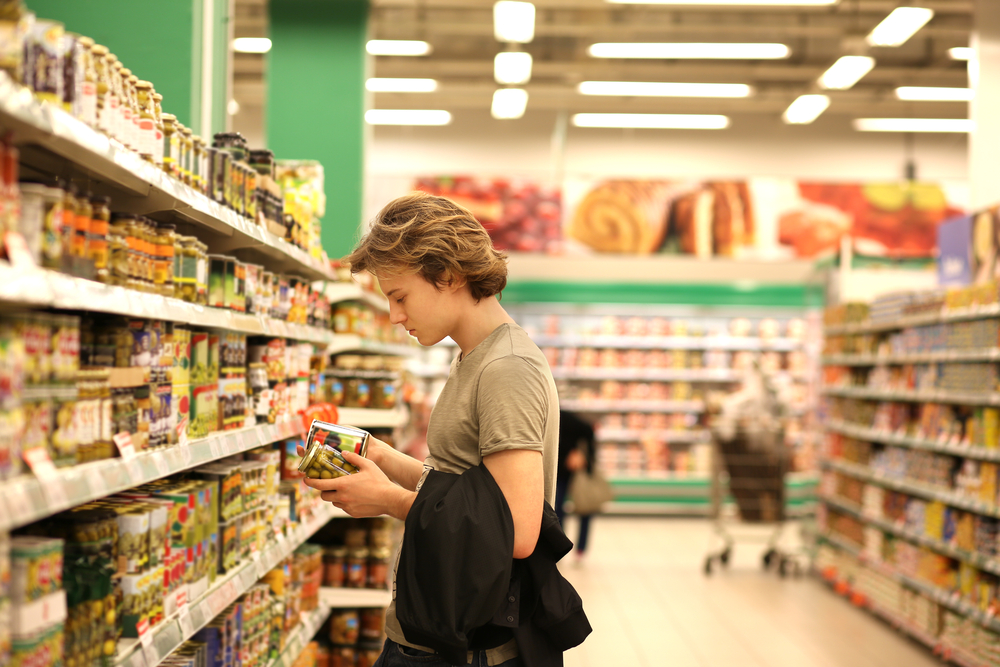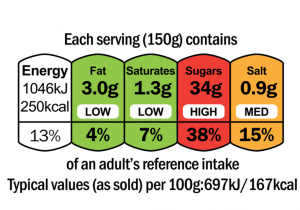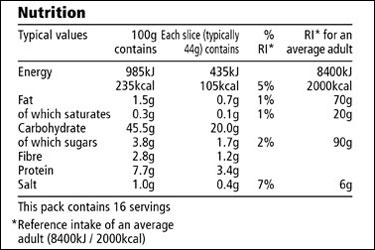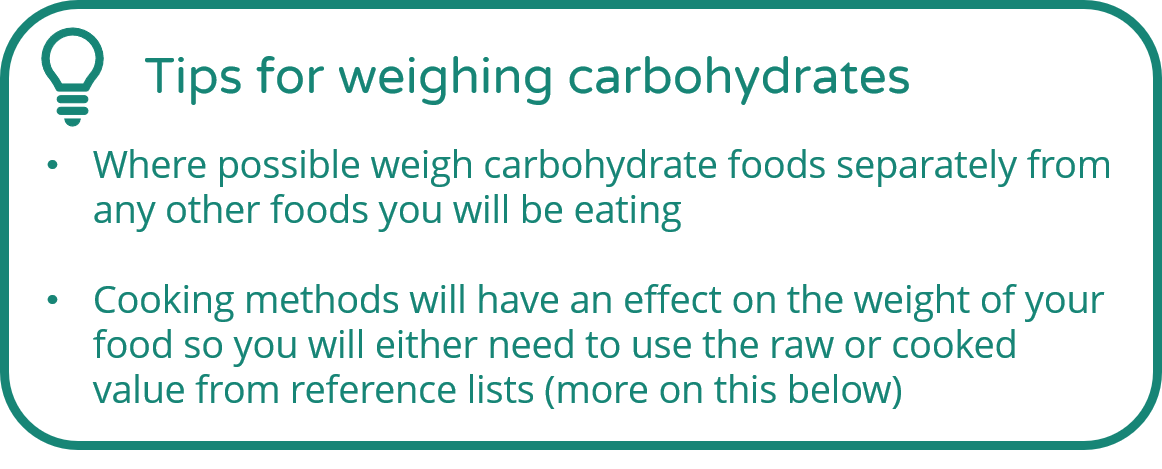Calculating carb content with food labels

On pre-packaged foods, you will see a small food label on the front of a packet, and a more detailed one on the back.
The food label that you will see on the front will be similar to the picture below, with red, amber and green colour coding.

The values on the front of a packet won’t help with identifying the carbohydrate content as they only show the energy (in calories and kilojoules), fat and saturated fat, sugars and salt.
To find out the carbohydrate content of the food, look at the label on the back of the packaging.
On food labels, you will see a total value for carbohydrate and a value for sugars. For calculating your insulin dose, you use the total carbohydrate value.
Calculating carbohydrate content by weight
It’s common that nutrition values are given per 100g and also per serving so make sure you are looking at the serving size to calculate how much carbohydrate the item contains.
If there isn’t a ‘per serving’ value, or you are having a different portion size than the one listed on the back of the food label, you will need to weigh your food to accurately work out how much carbohydrate you are eating. It’s a good idea to get a digital scale. They are fairly inexpensive and you can buy them in most supermarkets.

Let’s look at this food label for bread. If you were having a sandwich with 2 slices of bread, you can see each slice contains 20 grams of carbohydrate. So, the total carbohydrate content for your sandwich would be 40 grams.
You can also get some nutrition scales that have pre-programmed data to give you the carbohydrate contents of foods and meals weighed. It’s important not to mix up the weight of the food with the carbohydrate content as both measurements are given in grams- the carbs can never be more than the weight of the food.

Cooked vs dried values
It’s important that you are using the correct values when you are calculating your portion sizes as the values differ from dry to cooked foods. Although the carbohydrate content of the food stays the same, the method of cooking will affect the weight.
Pasta, and rice for example, absorb water whilst cooking so the portion will weigh more once it has cooked. A raw potato may be 200 grams before it has cooked, however once baked it will weigh less as the water has been lost during the cooking process.
When cooking pasta or rice at home, it’s best to use the raw weight as the volume of water absorbed during cooking can vary depending on how long it is cooked for. When you are eating out you will use the cooked value and will need to do a visual estimate of your portion using a resource such as Carbs & Cals.
It is important to be aware of this difference between raw and cooked values because otherwise it would be very easy to over or underestimate the carbohydrate content of a food, which could mean giving too much or too little bolus insulin
Worked example for calculating carb content of loose foods
For loose foods such as pasta, cereal and rice, you’ll need to measure your portion and use the ‘per 100g’ value on the nutritional label to work out how much carbohydrate you are eating.
When calculating values, you will need to round the number up or down if it isn’t a whole number. When the number after the decimal point is below 5 (e.g. ‘.4’) you should ‘round down’, if the number after the decimal point is 5 or above, you should ’round up’.
| Typical values | As sold 100g contains |
|---|---|
| Energy | 1515kj / 360kcal |
| Fat | 1.0g |
| of which saturates | 0.2g |
| Carbohydrate | 77.4g |
| of which sugars | 0.2g |
| Fibre | 1.8g |
| Protein | 8.5g |
| Salt | <0.01g |
Using the table and values above, let’s look at how you would work out how much carbohydrate would be in an 80-gram portion of this food.
To do this you will use the following calculation:

So, for this example it would be:

In this case, you would round the number up as the number after the decimal point is above 5. Therefore an 80g portion of this food would have 62 grams of carbohydrate.
Watch the video from NHS Sheffield Teaching Hospitals below for a step-by-step guide for calculating the total carbohydrate content using food labels:
In the next topic we’ll look at calculating carb content using food reference guides.



Leave a Reply
You must be logged in to post a comment.